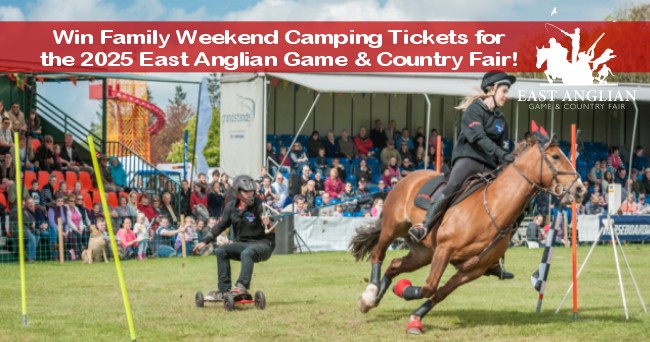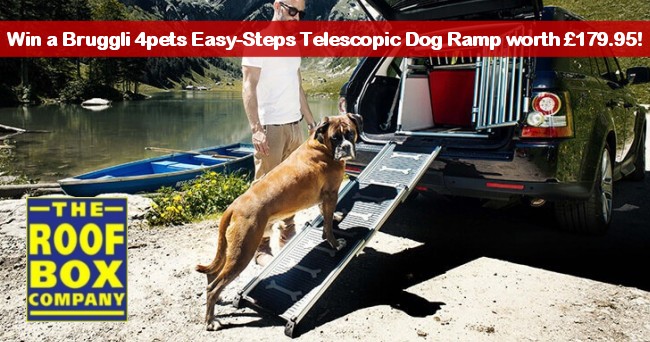Read Part
Three
We Left Zagora for the long drive across the Jbel Sahara a single-track
metallic road to Merzouga a distance of over 200 miles with only three
villages and one petrol station, which we found out, later to be closed.
With a light foot on the throttle we made it, even though we had our first
break down since leaving UK. With the road being single track, every time
you met a vehicle coming the other way whether itís a truck or a grand taxi
itís a game of chicken that the tourist is bound to lose. You have to pull
onto the hard shoulder, sometimes at speed. The hard shoulder is lower than
the road and filled with large, sharp stones. With our caravan being a twin
axle I did not realize that I had received a blow out. It was when nature
called in the middle of nowhere that not only did I see the tyre ripped from
the damaged alloy wheel but also the body of the wheel arch had been also
damaged from flying shreds of Dunlop!! Whilst Liz prepared lunch, I changed
the wheel patched up the damage with gaffa tape and we were on our way.
We arrived at Merzouga in the evening with the famous Erg Chebbi as its
backdrop. Erg Chebbi being a huge towering, drifting, expanse of sand dune.
Moroccoís only genuine Erg. Plus the dunes themselves that change colour
from pink to gold to red at all times of the day. Unless you get a sand
storm as we did one day and you see nothing and the sand gets everywhere.
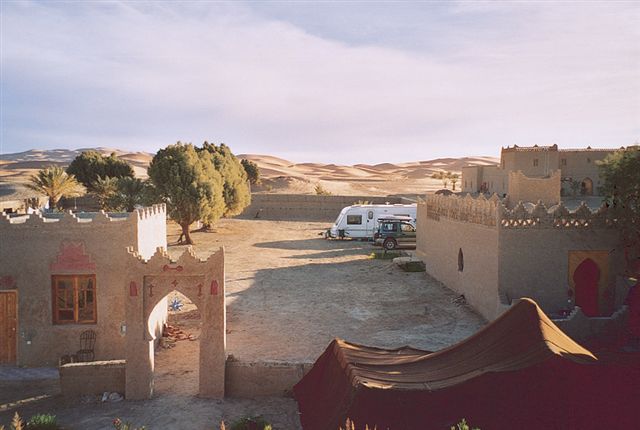
Camping Tomboctou.
Kasbah Tomboctou was to be our campsite for ten days. A large kasbah with
plenty of guest rooms, and outside in the desert, Berber tents erected on a
permanent basis, which had lounges and bedrooms all decorated in Moroccan
style. There was also built separate from the kasbah washrooms, toilets and
showers, which were cleaned several times a day. We found the restaurant
very good value for money, and we were only charged 20dirham a night
including electrics and water.
Whilst here we visited many Berber camps out in the desert did a lot of off
roading, visited the town of Rissani with its palmeraies, Its a bit of a
cross roads of a place where long distance coaches stop off to change
passengers for different destinations, throughout Morocco. (There are no
trains in this part of the country).
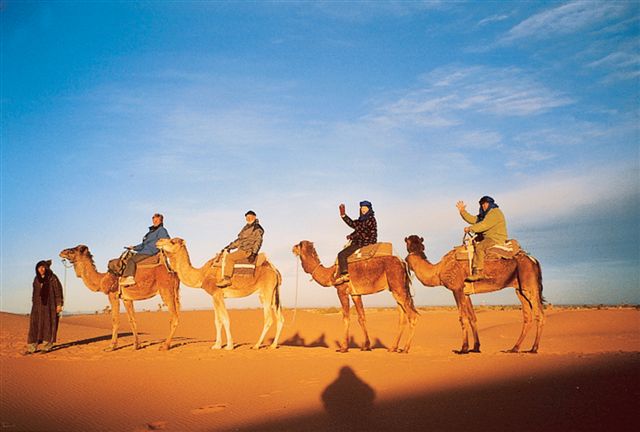
Sunrise.
We also got up one morning at 4am and took a guided camel ride out into the
dunes and then up Erg Chebbi to witness sunrise, which was fantastic and
also fantastic, is the sky at night. With no pollution and no streetlights
the stars and the odd satellites light up the whole sky.
It was now mid February 30f and getting warmer as we left Merzouga. Liz was
getting itchy feet to go ski-ing,(Actually they do ski on the sand dunes) so
we turned and with our back to the Sahara which we really and truly loved we
headed north.. We stopped overnight at a camp site in the Valley du Ziz at
the source of the Bleue Meski It has a natural spring spilling into a.
swimming pool. Not the place we would go swimming. The whole place was dirty
including the showers and toilets. The staff just lounged around drinking
tea and smoking what appeared to be kif!! We used the caravan, the only time
we did in Morocco and departed early next morning.
We passed through Er-Rachidia a large town an a important crossroads of
routes that cross north to south and east to west. Built by the French as a
military outpost with a large army garrison still active. As you drive out
of town on the Meknes road within two miles on your right you will see
trucks parked up with empty gas bottles stacked on their trailers. This is
another gas depot where they will recharge you gas bottles while you wait. I
know of no other such depots in Morocco except for the one at Agadir.so take
note.
As you leave Er Rachidia on a well-surfaced two-lane road you start to
climb. This is a spectacular route which passes through the Ziz Gorges and
the Tunnel du Legionnaire built by you know who. Then up into the snow line
and over the Tagalm Pass at 1950 metres, which drops down to Midelt via
hairpin bends into the valley bottom. You begin to notice the terrain is
turning green we see flowers and grass, something we had not seen for
several months. Then its up and over The Col du Zad at 2200 metres, before
dropping down once more into the town of Azrou. It was late in the day. We
picked up and sent E-mails had something to eat and found a campsite.
The next day we arrive in Meknes Known as the Versailles of Morocco, with
impressive buildings such as Dar Jamai Museum, The Mausoleum of Moulay
Ismail, The huge gate of Bab el Mansour and much more. The Souq we found was
very good, with abundant olives, citrus fruits, cereals, wine, etc., all
products from around this area. We only intended to stay a day or so here,
but there were so much to see in this hassle-free city. We used the camping
site International díAgdal about a mile from the city, which was clean and
tidy with good security.
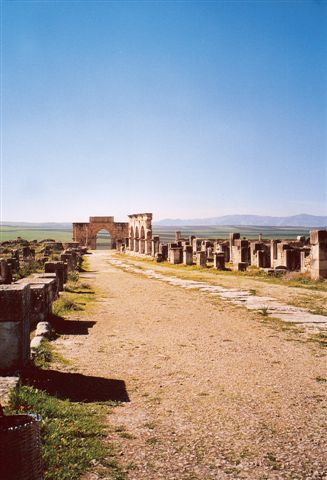
Volubilis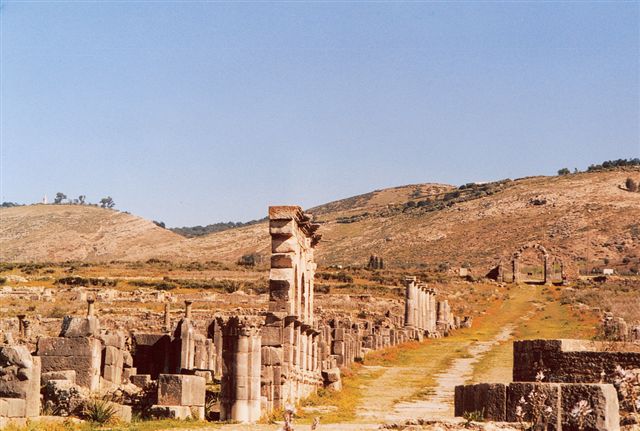
Volubilis
On the fourth day we departed for Chefchaouen, and an hour later stopped at
Volubilis, which is the largest and best preserved Roman ruins in Morocco.
Itís a Unesco World Heritage Site and should not be missed. It was one of
the Romans most remote outposts. It is estimated that the city housed 20,000
people. We spent three hours wandering around this site. Then on through the
Rif Mountains. When travelling through this area its advisable not to stop
and if you do, donít let your caravan/campervan out of your sight. This is
Kif country, (Marijuana) The word Kif meaning pleasure in Arabic. Its
cultivation is widespread and is tolerated, and some villages grow nothing
else. Liz got approached and asked if she would like some chocolate. Her
eyes lit up, as she hadnít seen a bar in months. It turned out it was Kif!
Another word they use is sunshine. It has been know that dealers will strap
Marijuana to the underside of your vehicles and then inform the police who
will stop and search you. If found in possession youíre nicked. It shows the
outside world that the police are doing their job!!
Chefchaouenís campsite (Camping Azilan) Is on top of a hill overlooking the
town, Basic but clean amongst trees with a restaurant. Itís a good 30-minute
walk down a steep hill into town and longer coming back up. We took the car,
but you can get a petit taxi for a couple of Euros.
Now Chefchaouen. What a place to be your last stop over in Morocco. We loved
it. Its narrow streets, courtyards, open squares with cafes, upmarket
hotels, restaurants and boutiques. Every thing happens here from seeing
50/60-year-old hippies still making return visits to smoke as much Kif as
they want.
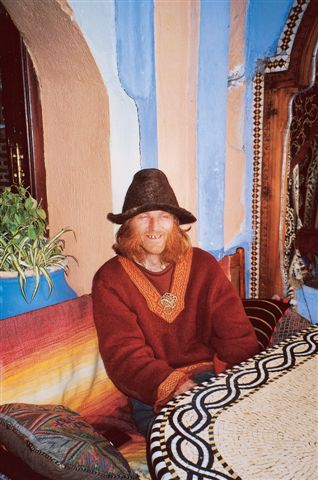
1960ís Hippie
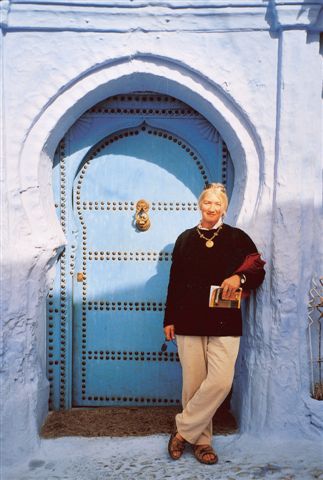
Chefchaouen
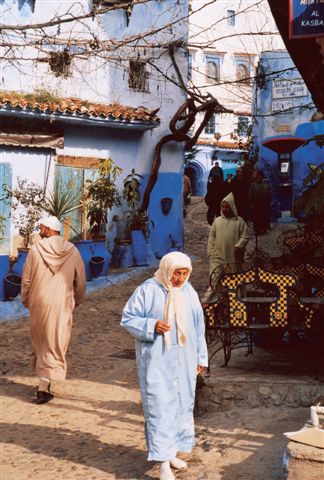
Chefchaouen
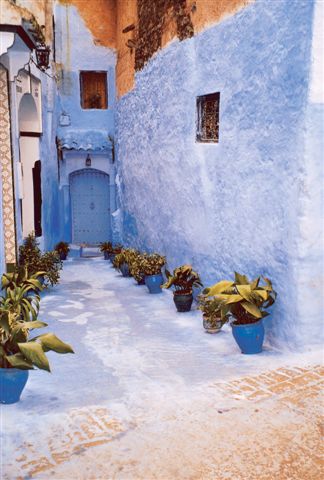
Chefchaouen
We met a guy from England who told us that he spends most of the winter
months here Itís the ideal place to chill out and take in its superb
atmosphere.
The Medina with its buildings is almost fluorescent in blue and white
colour, even the edges of the paths are painted blue and when you see them
completely painted over you know you have entered a dead end. Quiet a lot of
tourists end up here to trek through the mountains, gorges and valleys. We
saw one tour leaving with guides and pack mules carrying all the gear, and
independents stocking up with provisions in town with rucksacks and tents,
to go it alone.
The following morning February 25th having spent nearly three months in
Morocco we left Chefchaouen for the 50 mile drive back to Ceuta to catch the
ferry across the Straights of Gibraltar and back into Europe, from where we
came. Twenty miles down the road it started to rain. The first rain since
the night we spent in Algeciras on the last day of November!!
It was sad to see Morocco getting further and further away from us as neared
the coast of Spain but we know that we will return soon, to meet once again
the wonderful smiling, people who made us so welcome in their country.
How do we know?
ďWe missed out the city of Fez.Ē
Now then which way is the French Alps?
We returned home at the end of March having covered a distance of 12500
miles.
Facts, Figures and Useful Information
Towcar
1998 Mitsubishi Shogun SWB GLS
Turbo Diesel
2835 CC
Diesel used 3,160 Litres = 18mpg
Oil consumption zero. (Except for oil change)
Water consumption zero.
Comments
Third Shogun very pleased.
Excellent tow car never had a problem from new.
Caravan
2003 Bessacarr Cameo 625GL
Twin Axle
Bought New.
Fuel
Diesel (Gasoil) cost about 6 Dirham = 35p litre.
Super leaded & Unleaded about 10 Dirham = 65p Litre.
If you are arriving in Morocco via Ceuta or heading for mainland Spain it is
best to arrive with a near empty tank as fuel is duty free.
Please note that this was the price before the steep rise in the price of
fuel oil on the world market.
Driving
In Morocco you drive on the right as in Spain. Driving during daylight is
really no problem once you get use to the different ways they drive. But
beware that traffic entering a roundabout from the right when youíre already
on one. They have right of way, and they show it. So keep alert at all
times.
After dark is a different matter. You will find that some vehicles drive
with no lights on at all!!
You will find that schoolchildren, cycles, mopeds horse & carts donkeys
litter the roads in the early evening, not only in the towns and villages
which many have no street lighting but also in rural areas.
We challenge fellow travellers to spot a speed camera or traffic warden!!
Maps
Maps are very difficult to get in Morocco. You should be able to get one
from a decent book shop in UK. We got ours in Gibraltar for £5.99
We used Insight Travel Map of Morocco
We found it to be very good. It even shows you where the towns and villages
in the south that have petrol stations, plus it has City plans of Marrakesh,
Casablanca, Rabat and Fez.
Money
Forget travellers cheques, credit cards etc. They only know one word and
thatís CASH. Unless you are in a main tourist centre, and you are liable to
pay a surcharge.
In all towns and cityís you will find ATMs. They are a common site. They
accept, Visa, MasterCard Cirrus, Maestro etc. The daily limit being 2,000
Dirham. We had no problem in obtaining cash.
Mobile Phones
Mobile phones cover over 85% of the population compared to land lines
which is 6% Using a UK Sim Card is expensive, get a Moroccan one, and donít
forget to inform your friends of the new number you will be given.
Internet Cafťís
In all large towns and cityís. Cost 10 Dirham per hour. (.65p)
Comments from Liz
This is not for the fainthearted, we were, very cautious at first, but as
we travelled further inside the country, our fears and apprehensions
disappeared
We had absolutely no problems whatsoever, and speaking to other fellow
travellers, they agreed.
It seems some people had encountered problems in Spain!!
Morocco can be frustrating,unexplainable,mind-blowing,and a whole host of
other things,but hang in there!!
It was truly a unique experience like no other.
Prepare to have your senses assaulted!!!!
So take a deep breath and dive in !! (Quote from Lonely Planet Morocco,
which we found invaluable 1 dog-eared copy for sale!!! |














